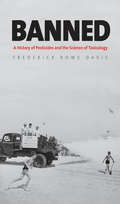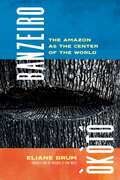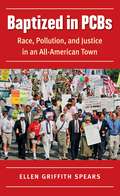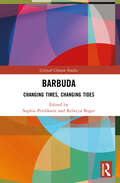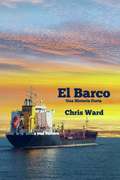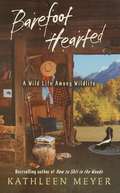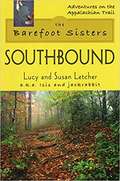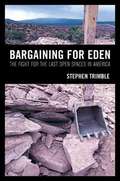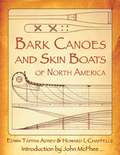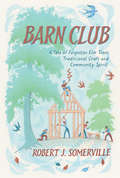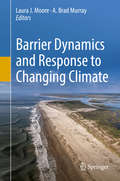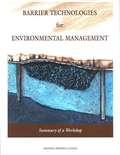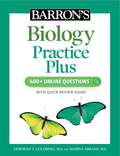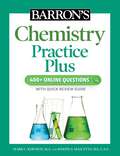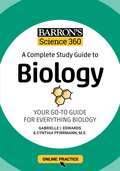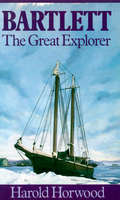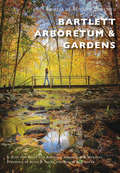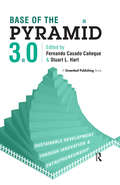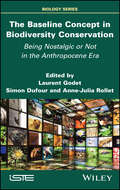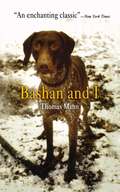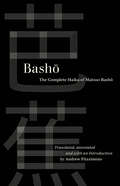- Table View
- List View
Banned
by Frederick Rowe DavisRachel Carson’s eloquent book Silent Spring stands as one of the most important books of the twentieth century and inspired important and long-lasting changes in environmental science and government policy. Frederick Rowe Davis thoughtfully sets Carson’s study in the context of the twentieth century, reconsiders her achievement, and analyzes its legacy in light of toxic chemical use and regulation today. Davis examines the history of pesticide development alongside the evolution of the science of toxicology and tracks legislation governing exposure to chemicals across the twentieth century. He affirms the brilliance of Carson’s careful scientific interpretations drawing on data from university and government toxicologists. Although Silent Spring instigated legislation that successfully terminated DDT use, other warnings were ignored. Ironically, we replaced one poison with even more toxic ones. Davis concludes that we urgently need new thinking about how we evaluate and regulate pesticides in accounting for their ecological and human toll.
Banzeiro Òkòtó: The Amazon as the Center of the World
by Eliane BrumA confrontation with the destruction of the Amazon by a writer who moved her life into the heart of the forest.In lyrical, impassioned prose, Eliane Brum recounts her move from São Paulo to Altamira, a city along the Xingu River that has been devastated by the construction of one of the largest dams in the world. In community with the human and more-than-human world of the Amazon, Brum seeks to “reforest” herself while building relationships with forest peoples who carry both the scars and the resistance of the forest in their bodies. Weaving together the lived stories of the region and its history of violent corruption and destruction, Banzeiro Òkòtó is a call for radical change, for the creation of a new kind of human being capable of facing the potential extinction of our species. In it, Brum reveals the direct links between structural inequities rooted in gender, race, class, and even species, and the suffering that capitalism and climate breakdown wreak on those who are least responsible for them.The title Banzeiro Òkòtó features words from two cultural and linguistic traditions: banzeiro is what the Amazon people call the place where the river turns into a fearsome vortex, and òkòtó is the Yoruba word for a shell that spirals outward into infinity. Like the Xingu River, turning as it flows, this book is a fierce document of transformation arguing for the centrality of the Amazon to all our lives.
Baptized in PCBs
by Ellen Griffith SpearsIn the mid-1990s, residents of Anniston, Alabama, began a legal fight against the agrochemical company Monsanto over the dumping of PCBs in the city's historically African American and white working-class west side. Simultaneously, Anniston environmentalists sought to safely eliminate chemical weaponry that had been secretly stockpiled near the city during the Cold War. In this probing work, Ellen Griffith Spears offers a compelling narrative of Anniston's battles for environmental justice, exposing how systemic racial and class inequalities reinforced during the Jim Crow era played out in these intense contemporary social movements. Spears focuses attention on key figures who shaped Anniston--from Monsanto's founders, to white and African American activists, to the ordinary Anniston residents whose lives and health were deeply affected by the town's military-industrial history and the legacy of racism. Situating the personal struggles and triumphs of Anniston residents within a larger national story of regulatory regimes and legal strategies that have affected toxic towns across America, Spears unflinchingly explores the causes and implications of environmental inequalities, showing how civil rights movement activism undergirded Anniston's campaigns for redemption and justice.
Barbie: A Sea of Friends
by Rita BalducciBarbie is a mermaid who loves adventure! So when some whale pals invite her on a trip up north, how can she resist? Barbie experiences all sorts of new things. And she can't wait to tell her sisters all about it--especially the part where she meets a real, live human! Picture descriptions present.
Barbuda: Changing Times, Changing Tides (Critical Climate Studies)
by Sophia Perdikaris and Rebecca BogerThis volume explores a range of themes including impacts of climate change, resilience, sustainability, indigeneity, cultural genocide, disaster capitalism, preservation of biodiversity, and environmental degradation. Focusing on the island of Barbuda in the West Indies, it shares critical insights into how climate change is reshaping our world. The book examines how climate has changed in the Caribbean over different spatial and temporal scales and how varying natural and anthropogenic factors have shaped Barbuda’s climatic and cultural history. It highlights projections of 21st-century climate change for the Caribbean region and its likely impacts on Barbuda’s coastal ecosystems, potable groundwater resources, and heritage. With essays by researchers from the United States, Canada, Caribbean, and Europe, this volume straddles a range of disciplines such as archaeology, anthropology, paleoclimatology, environmental sciences, science education, and Traditional Ecological Knowledge (TEK). Drawing on interdisciplinary and transdisciplinary approaches that explore the intersection of natural and social systems over the longue durée, the volume will be of interest to scholars, researchers, and students of ethnography, social anthropology, climate action, development studies, public policy, and climate change.
El barco - Una historia corta
by Chris Ward Marina García RodríguezPara Ken, un fanático de los barcos, la imagen del supertanque Bostonian, que está atracado en el puerto de su ciudad antes de embarcar en el último tramo de su viaje final es demasiado importante para perdérsela. Sin embargo, el matón del colegio, Max, tiene otra perspectiva...
Barefoot-Hearted
by Kathleen Meyer"The Wyoming Centennial Wagon Train ended in Cody in a dismal, torn-down drive-in movie theater. Before setting up the corral, we were forced to clear away shards of glass, bent nails, broken lumber. My prairie skirt and petticoats hung ragged and clay-caked, and under a droopy Stetson my frizzled hair appeared at once greased and starched beyond human recognition. A cloud, a sort of vaporousness, redolent with fresh acrid sweat on top of powerful stale sweat, hung thickly about me. Laced, as it was, with a woman's sweet musky secretions, and all gone past ripe, oddly it was a pungency I savored. Such goaty piquance, though, was cause to be shunned in any town setting. The look of my world had changed. Gone were the high-dollar designer clothes and the zipping around fabled Marin County in a candy-apple-red 1966 Mustang convertible. It was true that I unfailingly sought the ironies in life and, with a kind of dual personality, shifted easily through incongruencies such as town strolls in high heels and backcountry hiking in bare feet; the bucket seats of a classic automobile and the broken-down bench of a beater truck. It was only during the years that Iíd worn white overalls, taped drywall, and come home every night much like Charles Schulz's Pig Pen, flaking a cloud of dried white mud bits onto the rug, that I'd felt moved to keep my fingernails painted red. Now I was to slip farther than ever planned toward one end of my seesaw and then, incredibly, by conscious design, inch out even farther." --from Barefoot-Hearted. Now, from the Rocky Mountain West, Meyer brings us Barefoot-Hearted: A Wild Life Among Wildlife, a coming-into-the-country story told with the frank, dry humor and sharp research of her first book. The country, in this case, is Montana's tall, reaching landscape with its ever underfoot wild critters; the on-tenterhooks territory of a new romantic relationship; and the pressure cooker that is our precarious global imbalance. Meyer finds herself in midlife standing out under yawning skies, surrounded by sagebrush and cactus, having fallen for the Irish charm of itinerant farrier Patrick McCarron. As partners, they travel across three mountain states with draft horses and a covered wagon and then set up housekeeping in a seventy-five-year-old dairy barn. In this primitive structure, the author rapidly discovers she's living with troops of mice, a nursery colony of seventy-five bats, sexually fired-up skunks, and more flies than in a pig shed. She tells of a freakish season that orphaned seventy-seven bear cubs, an unusual fly-fishing trip on a famed blue-ribbon trout stream, the visitations of moose, and the discovery of a den of wolves. Meyer's prose is original and inspired, playful yet provocative. She carries us vividly back to the settlers' old West while pondering modern-day dilemmas, those of fitting into this fast hurtling world, of determining amid the earth's rising extinctions of species, whose planet it is, and of managing to stay empowered residing with a man who "stands six feet six and beats steel on an anvil for a living." A personal chronicle of conscience and a love story of rare and quirky dimension, Barefoot-Hearted catapults readers into new realms of thought, deftly guided there by Meyer's sense of the ironic, the randy, and the humorous.
The Barefoot Sisters Southbound (Adventures On The Appalachian Trail)
by Lucy Letcher Susan LetcherAt the ages of twenty-five and twenty-one, Lucy and Susan Letcher set out to accomplish what thousands of people attempt each year: thru-hike the entire 2,175 miles of the Appalachian Trail. The difference between them and the others? They decided to hike the trail barefoot. Quickly earning themselves the moniker of the Barefoot Sisters, the two begin their journey at Mount Katahdin and spend eight months making their way to Springer Mountain in Georgia. As they hike, they write about their adventures through the 100-mile Wilderness, the rocky terrain of Pennsylvania, and snowfall in the Great Smoky Mountains--a story filled with humor and determination. It's as close as one can get to hiking the Appalachian Trail without strapping on a pack.
Bargaining for Eden: The Fight for the Last Open Spaces in America
by Stephen TrimbleThis book takes a penetrating look at the battles raging over the land--and the soul--of the American West and investigates the story of a reclusive billionaire who worked relentlessly to acquire public land for his ski resort and to host the Salt Lake City Winter Olympics. Trimble explores the inner conflicts, paradoxes, and greed at the heart of land-use disputes from the back rooms of Washington to the grassroots efforts of passionate citizens.
Bark Canoes and Skin Boats of North America
by Howard I. Chapelle Edwin Tappan Adney John McPheeThe bark canoes of the North American Indians, particularly those of birchbark, were among the most highly developed manually propelled primitive watercraft. Built with Stone Age tools from available materials, their design, size, and appearance were varied to suit the many requirements of their users. Even today, canoes are based on these ancient designs, and this fascinating guide combines historical background with instructions for constructing one. Author Edwin Tappan Adney, born in 1868, devoted his life to studying canoes and was practically the sole scholar in his field. His papers and research have been assembled by a curator at the Smithsonian Institution.
Barn Club: A Tale of Forgotten Elm Trees, Traditional Craft and Community Spirit
by Robert Somerville"In today’s ego-techno-centred world, Robert Somerville’s… ‘Barn Club’ approach is a way forward that utilizes local traditions, local materials and local hands to create a built environment that is more harmonious with the natural world and of course more beautiful."—Jack A. Sobon, architect, timber framer, and author of Hand Hewn Natural history meets traditional hand craft in this celebration of the elm tree and community spirit. Perfect for fans of Norwegian Wood and The Hidden Life of Trees Barn Club calls on us to discover our landscapes more intimately and to explore the joys of making beautiful things by hand, together. When renowned craftsman Robert Somerville moved to Hertfordshire, in southern England, he discovered an unexpected landscape rich with wildlife and elm trees. Nestled within London’s commuter belt, this wooded farmland inspired Somerville, a lifelong woodworker, to revive the ancient tradition of hand-raising barns. Barn Club follows the building of Carley Barn, over the course of one year. Volunteers from all walks of life joined Barn Club, inspired to learn this ancient skill of building elm barns by hand, at its own quiet pace and in the company of others, while using timber from the local woods. The tale of the elm tree in its landscape is central to Barn Club. Its natural history, historic importance, and remarkable survival make for a fascinating story. This is a tale of forgotten trees, a local landscape, and an ancient craft. This book features 16 pages of color photographs, and black and white line drawings of techniques and traditional timber frame barns feature throughout.
The Barn Owl
by Maurice BurnsHere is your chance to learn all about barn owls. This is the story of what happens to a barn owl during a year starting in the winter when he almost starves. Watch him hunt for food, deliver prey to his mate while she sits on their eggs and raise owl chicks. The pictures are described.
Barney Beagle Goes Camping
by Jean BethellPoor Barney. He tries to catch a fish, but ... He tries to help put up the tent, but ... Then, two hungry bears come ... This file should make an excellent embossed braille file.
Barrier Dynamics and Response to Changing Climate
by Laura J. Moore A. Brad MurrayThis book presents chapters, written by leading coastal scientists, which collectively depict the current understanding of the processes that shape barrier islands and barrier spits, with an emphasis on the response of these landforms to changing conditions. A majority of the world's population lives along the coast at the dynamic intersection between terrestrial and marine ecosystems and landscapes. As narrow, low-lying landforms, barriers are especially vulnerable to changes in sea level, storminess, the geographic distribution of grass species, and the rate of sand supply--some barriers will undergo rapid changes in state (e. g. , from landward migrating to disintegrating), on human time scales. Attempts by humans to prevent change can hasten the loss of these landforms, threatening their continued existence as well as the recreational, financial and ecosystem service benefits they provide. Understanding the processes and interactions that drive landscape response to climate change and human actions is essential to adaptation. As managers and governments struggle to plan for the future along low-lying coasts worldwide, and scientists conduct research that provides useful guidance, this volume offers a much-needed compilation for these groups, as well as a window into the science of barrier dynamics for anyone who is generally interested in the impacts of a changing world on coastal environments.
Barrier Technologies for Environmental Management: Summary of a Workshop
by Committee on Remediation of Buried Tank WastesTo control the migration of radioactive and hazardous wastes currently contained underground, barriers made of natural materials and man-made substances are constructed atop, and possibly around, the contaminated area. Barrier Technologies for Environmental Management provides a brief summary of the key issues that arose during the Workshop on Barriers for Long-Term Isolation. Recurring themes from the session include the importance of quality control during installation, followed by periodic inspection, maintenance, and monitoring, and documentation of installation and performance data. The book includes papers by the workshop presenters.
Barron's Biology Practice Plus: 400+ Online Questions and Quick Study Review
by Deborah T. Goldberg M.S. Marisa AbramsNeed quick review and practice to help you excel in Biology?Barron&’s Biology Practice Plus features more than 400 online practice questions and a concise review guide that covers the basics of Biology. Inside you&’ll find:Concise review on the basics of Biology—an excellent resource for students who want a quick review of the most important topicsAccess to 400+ online questions arranged by topic for customized practiceOnline practice includes answer explanations with expert advice for all questions plus scoring to track your progressThis essential guide is the perfect practice supplement for students and teachers!
Barron's Chemistry Practice Plus: 400+ Online Questions and Quick Study Review
by Mark Kernion M.A. Joseph A. Mascetta M.S.Need quick review and practice to help you excel in Chemistry?Barron&’s Chemistry Practice Plus features more than 400 online practice questions and a concise review guide that covers the basics of Chemistry. Inside you&’ll find:Concise review on the basics of Chemistry—an excellent resource for students who want a quick review of the most important topicsAccess to 400+ online questions arranged by topic for customized practiceOnline practice includes answer explanations with expert advice for all questions plus scoring to track your progressThis essential guide is the perfect practice supplement for students and teachers!
Barron's Science 360: A Complete Study Guide to Biology with Online Practice
by Gabrielle I. Edwards Cynthia PfirrmannBarron&’s Science 360: Biology is your complete go-to guide for everything biologyThis comprehensive guide is an essential resource for:High school and college coursesHomeschoolingVirtual LearningLearning podsInside you will find:Comprehensive Content Review: Begin your study with the basic building block of biology and build as you go. Topics include, the cell, bacteria and viruses, fungi, plants, invertebrates, Homo sapiens, biotechnology, and much more.Effective Organization: Topic organization and simple lesson formats break down the subject matter into manageable learning modules that help guide a successful study plan customized to your needs.Clear Examples and Illustrations: Easy-to-follow explanations, hundreds of helpful illustrations, and numerous step-by-step examples make this book ideal for self-study and rapid learning.Practice Exercises: Each chapter ends with practice exercises designed to reinforce and extend key skills and concepts. These checkup exercises, along with the answers and solutions, will help you assess your understanding and monitor your progress.Access to Online Practice: Take your learning online for 50 practice questions designed to test your knowledge with automated scoring to show you how far you have come.
Barron's Science 360: A Complete Study Guide to Chemistry with Online Practice
by Mark Kernion M.A. Joseph A. Mascetta M.S.Barron&’s Science 360: Chemistry is your complete go-to guide for everything chemistryThis comprehensive guide is an essential resource for:High school and college coursesHomeschoolingVirtual LearningLearning podsInside you&’ll find:Comprehensive Content Review: Begin your study with the basic building block of chemistry and build as you go. Topics include, atomic structure, chemical formulas, electrochemistry, the basics of organic chemistry, and much more.Effective Organization: Topic organization and simple lesson formats break down the subject matter into manageable learning modules that help guide a successful study plan customized to your needs.Clear Examples and Illustrations: Easy-to-follow explanations, hundreds of helpful illustrations, and numerous step-by-step examples make this book ideal for self-study and rapid learning.Practice Exercises: Each chapter ends with practice exercises designed to reinforce and extend key skills and concepts. These checkup exercises, along with the answers and solutions, will help you assess your understanding and monitor your progress.Access to Online Practice: Take your learning online for 50 practice questions designed to test your knowledge with automated scoring to show you how far you have come.
Bartlett: The Great Explorer
by Harold HorwoodThis is the story of the greatest Canadian ice captain who ever lived--the greatest, by general consent, of any nationality in this century. Robert Bartlett took ships to the north coast of Ellesmere Island, sledged to within 150 miles of the North Pole, made twenty-two voyages into the Canadian Arctic, and six to other parts of the Arctic, yet is almost wholly unknown in Canada.Besides piloting some of the most famous exploring voyages of all time--those of Robert E. Peary and Vilhajalmur Stefansson--Bartlett made four arctic voyages for the American Government and sixteen expeditions of his own which produced, in the period between the world wars, an immense wealth of scientific knowledge. He was the first arctic explorer to place science ahead of exploration.Harold Harwood worked from the original manuscripts and ships' logs to tell the life-story of this remarkable man. Bartlett was a colourful, often controversial character, a man whose extraordinary courage and tenacity were of heroic proportions.
Bartlett Arboretum & Gardens (Images of Modern America)
by Bartlett Arboretum Gardens Foreword By Smith Hilary B. Forsyth S. Jane TrappBartlett Arboretum & Gardens follows the history of this exquisite Stamford, Connecticut, gem from its genesis as a tree research lab and a training school for arborists to today’s 93 acres of irreplaceable open space. It highlights the best of what Connecticut’s native landscape has to offer: magnificent award-winning champion trees, charming gardens, wildflower meadows, red maple wetlands and boardwalks, woodland walking trails, varied wildlife, and native habitats. As the original home of Francis A. Bartlett, the founder of the F.A. Bartlett Tree Expert Company, the grounds were developed with his favorite trees, including nut trees, small flowering trees, and conifers, from around the world. This is a fascinating story about the passing of the property from Bartlett to the State of Connecticut to the City of Stamford, the hundreds of volunteers who have advocated and toiled to keep the arboretum beautiful and accessible to the public, and the impressive century-old plants.
Base of the Pyramid 3.0: Sustainable Development through Innovation and Entrepreneurship
by Fernando Casado Caneque Stuart L. HartFor well over 4 billion people – approximately 60% of all humanity – annual income is less than $1,500. The term "Base of the Pyramid" was first coined by Stuart L. Hart and C.K. Prahalad in 2002 and has become synonymous with both the method by which we can more effectively address poverty and the opportunity that exists in a multi-trillion-dollar market. A whole new lexicon has emerged to describe this phenomenon, including new buzzwords and catch phrases like "inclusive business", "opportunities for the majority", "sustainable livelihoods", "pro-poor business" and “social business”, and thousands of new businesses, institutions and investment funds have been set up.In this ground-breaking new book, Stuart L. Hart and Fernando Casado Cañeque have worked with members of the BoP Global Network to shake the tree, look objectively at what has happened since 2002, highlight why earlier applications of BoP haven’t worked and propose new objectives and ways of working to formulate more sustainable solutions. The book challenges the reader and organizations to think about the mindset and purpose across whole organizations, open innovation rather than simply co-creation, and a complete review of the innovation ecosystem. Through this book, practitioners will gain a clearer insight into which business models can work within different communities to ensure a sustainable transition to improved local economies. Equally, the book is a must-read for researchers and students in the fields of entrepreneurship, innovation, sustainable development and environmental management.
The Baseline Concept in Biodiversity Conservation: Being Nostalgic or Not in the Anthropocene Era
by Laurent Godet Simon Dufour Anne-Julia RolletThe Anthropocene era has been marked by such significant human pressure that it has led to the sixth mass extinction. The Baseline Concept in Biodiversity Conservation interprets human domination of the Earth as the process of gradual landscape change, the execution of which is neither linear nor homogeneous. This book is structured around three key questions: Where and when did everything go wrong? How do we define baseline states for biodiversity conservation strategies? How are reference states mobilized in a concrete way through case studies? Today, biodiversity conservation faces a dilemma that this book sheds light on: return to states less modified by humans than today but in a world that has changed significantly; or, let the nature of tomorrow express itself where it still can but without a road map.
Bashan and I
by Thomas Mann Herman George ScheffauerBashan and I is the moving story of Thomas Mann's relationship with his spirited German short-haired pointer. From their first encounter at a local farm, Mann reveals how he slowly grows to love this energetic, loyal, and intelligent animal. Taking daily walks in the nearby parkland, Mann begins to understand and appreciate Bashan as a living being, witnessing his native delight in chasing rabbits, deer, and squirrels along with his careful investigations of stones, fallen branches, and clumps of wet leaves. As their bond deepens, Mann is led to contemplate Bashan's inner life, and marvels at the ease with which his dog trusts him, completely putting his life into his master's hands.Over time, the two develop a deep mutual understanding, but for Mann, there is always a sense of loss at never being able to enter the private world of his dear friend, and he slowly becomes conscious of the eternal divide between mankind and the rest of nature. Nonetheless, the unique relationship quietly moves to the forefront of Mann's life, and when master and companion are briefly separated, Mann is taken aback by the depth of his loneliness without his dog. It is this deep affection for another living creature that helps the writer to reach a newfound understanding of the nature of love, in all its complexity.First published in 1916 and translated into English in 1923, Bashan and I was heralded for its simple telling of how a dog became a priceless companion, an animal who brought meaning to the author's life.
Basho: The Complete Haiku of Matsuo Basho
by BashoThis is the essential English edition of the complete poems of the eminent Japanese master of the haiku, Matsuo Bashō. Matsuo Bashō (1644–1694) is arguably the greatest figure in the history of Japanese literature and the master of the haiku. Bashō: The Complete Haiku of Matsuo Bashō offers in English a full picture of the haiku of Bashō, 980 poems in all. Andrew Fitzsimons’ translation is the first to adhere strictly to form: all of the poems are translated following the syllabic count of the originals. This book also translates a number of Bashō’s headnotes to poems ignored by previous English-language translators. In Fitzsimons’ beautiful rendering, Bashō is much more than a philosopher of the natural world and the leading exponent of a refined Japanese sensibility. He is also a poet of queer love and eroticism; of the city as well as the country, the indoors and the outdoors, travel and staying put; of lonesomeness as well as the desire to be alone. His poetry explores the full range of social experience in Edo Japan as he moved among friends and followers high and low, the elite and the demi-monde, the less fortunate: poor farmers, abandoned children, disregarded elders. Bashō: The Complete Haiku of Matsuo Bashō reveals how this work speaks to our concerns today as much as it captures a Japan emerging from the Middle Ages. For dedicated scholars and those coming upon Bashō for the first time, Fitzsimons’ elegant translation—with an insightful introduction and helpful notes—allows readers to enjoy these works in all their glory.
